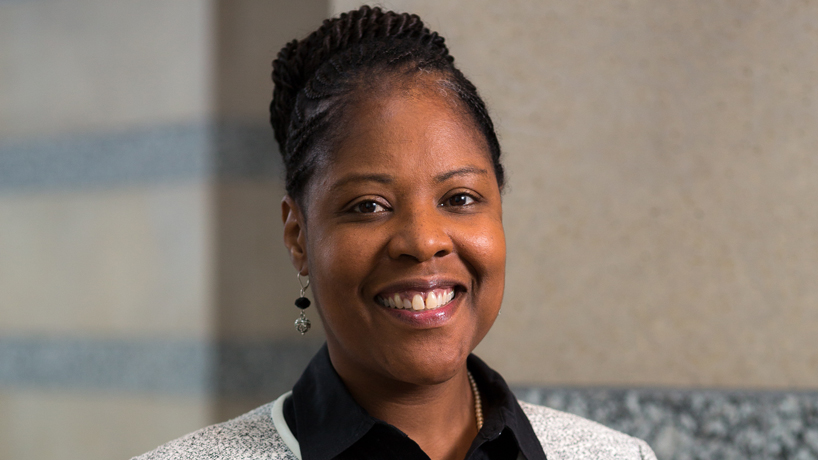
On Aug. 5, UMSL College of Education alumna Melanie Adams will start as director of the Anacostia Community Museum, one of the 19 museums in the Smithsonian network. (Photo courtesy of Melanie Adams)
An 11-year stint with the Missouri Historical Society gave University of Missouri–St. Louis education PhD alumna Melanie Adams a clear vision for her future.
Starting in 2005, Adams worked as managing director of community education and events for the MHS and the Missouri History Museum, overseeing more than 700 community programs annually. Adams prized the strong connection institutions such as the MHS and its museum can make with patrons.
“The Missouri Historical Society really is an anchor in the community,” Adams said. “I was able to explore issues that were relevant to the community like race, gender, equity. The exhibits we did there, the programs we did were powerful. We brought people to the museum to see their stories, which they never thought they would see. That’s where I saw the power of museums.”
On Aug. 5, Adams will start her new role as the director of the Anacostia Community Museum in Washington, D.C., one of the 19 museums in the prestigious Smithsonian network. She spent the past three years as deputy director of learning initiatives at the Minnesota Historical Society, where she developed community partnerships and managed 26 historic sites and museums throughout the state.
In her first role as director, Adams is excited to dive deep into the historic Anacostia neighborhood, which famed abolitionist Frederick Douglass once called home and which, since the 1960s, has been predominantly African American. She wants to tell its story.
“I was attracted to the mission,” Adams said. “It reflects both the work I did when I was in Missouri as well as the work around my PhD in looking at urban communities. It was just the perfect combination of everything I really enjoyed doing.”
Adams finished her dissertation, titled “Advocating For Educational Equity: African American Citizens’ Councils in St. Louis, Missouri, From 1864 To 1927” in 2014. Working through the College of Education with her advisor, Associate Professor Matthew Davis, she explored the effort the city’s African American leaders had to exert to secure educational opportunities through the founding of institutions such as Sumner High School in 1875 and Vashon High School in 1927.
“What I wanted to show was African Americans advocating for their own schools,” Adams said. “In one of the newspaper articles, they talked about how the school board gave them a school. I remember that just rubbed me the wrong way. No one gave them a school. They fought for the school. They petitioned the board for this. It was an opportunity to talk about African American agency and how important that was in terms of education in St. Louis. A lot of lessons learned in those early years are still relevant in today’s system.”
Adams was able to apply that knowledge in her role as part of the three-member Special Administrative Board, which the Missouri State Board of Education convened in 2007 to govern Saint Louis Public Schools after the district lost its accreditation.
She served on the board for nine years before moving on to Minnesota. Her time on the board, in tandem with her role at the MHS, helped embed her in the community.
“Public service is one of the best educators out there,” Adams said. “That allowed me to learn about community concerns in a way that, if you’re not sitting in that type of public seat, you wouldn’t always have. It taught me about politics, good and bad. That really was one of the best learning experiences.”
Adams expects her first few months in D.C. to be a time of listening to and learning from the community. The Anacostia is without a physical home until October as it undergoes renovations, but the museum is taking its current exhibit – “A Right to the City” – around to five different DC Public Library branches in the interim.
It’s a blessing in disguise: a way to bring the museum to the people it serves. Adams hopes to use her experience and the theories she studied at UMSL to continue that accessibility once the Anacostia moves back to its permanent spot.
“The PhD program allowed me to look at things through a very different lens,” Adams said. “It’s looking at the exhibits we create in terms of whose story we decide to center. Is it centered around one particular group, or are we telling that story in a way that’s more nuanced and able to bring a variety of narratives into that story? Are we allowing voices of color from the community to have equal weight with others? It has allowed me to look at things through more of a lens of racial equity.”














